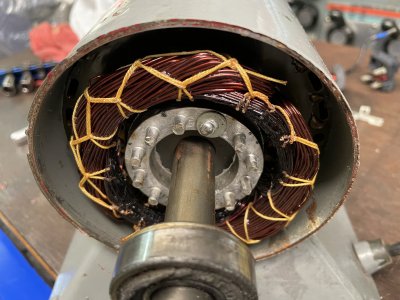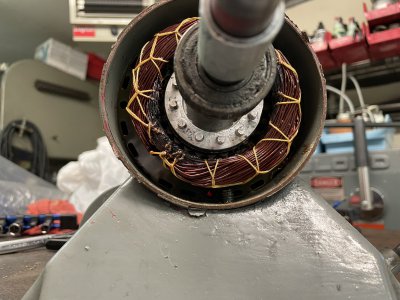A little basic motor theory is the best I can offer at this point. To start, the start winding normally is only run for a few seconds at motor start. There are motors that are "split phase" where both windings run continuously, but this is not one. The motor can still be used without a start winding, it just needs a "kick starter". Manual or semi-automatic doesn't matter, nor does direction. The bottom line is the motor is still usable, but not for ordinary applications. But for an induction generator now. . . I have a couple of archaic motors from machines, Craftsman brand. They have a "flat pack" capacitor, no longer made, that mounts inside the motor base. Since I prefer Baldor TEFC motors anyway, I simply set them aside. They run fine, they just won't crawl. I could attach an external capacitor, if space could be found, but that involves opening the motor. With such poor insulation after 50-75 years, they are better left alone.
The original failure on your motor possibly came about from the relay failing. That would cause the start winding to stay energized, which would burn out the start winding in short order. My guess (SWAG) is the relay is a Normally Closed contact that opens as the current falls off. Just how that is being measured is an open question, depending on the manufacturer. I have seen a similar system on the spin motor for a stationary (big) hard disk for a mainframe. Not the same, but similar. . .
Electrolytic capacitors, especially non-polarized motor caps, have a wide tolerance, often as much as +/-25%. If you are around the middle of that tolerance, you are pretty close to the correct capacitance. As a rule, motor caps are marked for the nominal capacitance, plus or minus that tolerance. Starting capacitance accuracy only comes into play when the motor must start a mechanically heavy load. Use on a lathe or mill is a light, almost free spinning load at start.
.



